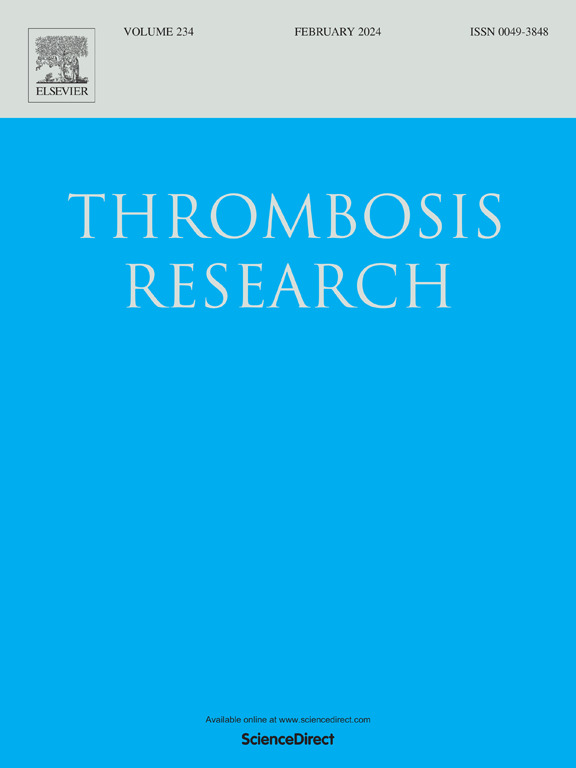The impacts of tranexamic acid on immune system during trauma
IF 3.4
3区 医学
Q1 HEMATOLOGY
引用次数: 0
Abstract
Tranexamic acid (TXA) is a synthetic, reversible competitive inhibitor of the lysine receptor on plasminogen. It inhibits plasmin, the active form of plasminogen, from binding to and degrading the fibrin matrix. The mechanism not only effectively mitigates bleeding complications in various hemostatic challenges but also lowers mortality, with minimal adverse effects, including postoperative seizures in specific situations. Although the effectiveness of TXA in acute trauma is well-established, its impact on both the innate and adaptive immune systems underscore the need to address existing knowledge gaps. This review aims to shed light on both the pro- and anti-inflammatory effects of TXA in the context of traumatic injuries. Moreover, we will argue about TXA immunological effects through its anti-plasmin activity, stemming from its high affinity for lysine residues on plasmin and fibrin residues on plasminogen, leading to reduced vascular permeability, decreased allergic responses, and diminished inflammation. Furthermore, it will be disclosed that TXA administration significantly inhibited neutrophil extracellular trap (NETosis) formation during trauma injuries. More importantly, we will provide profound insights about the prominent factors orchestrating TXA immunomodulatory and prophylactic effects during trauma, including the type of trauma, presence of infection, TXA dosage, duration since trauma onset, the persistence of TXA treatment and genetic background.
创伤时氨甲环酸对免疫系统的影响
氨甲环酸(TXA)是一种合成的、可逆的、对纤溶酶原赖氨酸受体具有竞争性的抑制剂。它抑制纤溶酶原的活性形式——纤溶酶与纤维蛋白基质的结合和降解。该机制不仅有效减轻了各种止血挑战中的出血并发症,而且降低了死亡率,不良反应最小,包括在特定情况下的术后癫痫发作。虽然TXA在急性创伤中的有效性是公认的,但它对先天和适应性免疫系统的影响强调了解决现有知识空白的必要性。本综述旨在阐明TXA在创伤性损伤中的促炎和抗炎作用。此外,我们将通过其抗纤溶酶活性来讨论TXA的免疫作用,由于它对纤溶酶上的赖氨酸残基和纤溶酶原上的纤维蛋白残基具有高亲和力,导致血管通透性降低,过敏反应减少,炎症减轻。此外,它将披露,TXA管理显著抑制中性粒细胞胞外陷阱(NETosis)的形成在创伤损伤。更重要的是,我们将提供关于创伤期间TXA免疫调节和预防作用的重要因素的深刻见解,包括创伤类型,感染的存在,TXA剂量,创伤发生后的持续时间,TXA治疗的持久性和遗传背景。
本文章由计算机程序翻译,如有差异,请以英文原文为准。
求助全文
约1分钟内获得全文
求助全文
来源期刊

Thrombosis research
医学-外周血管病
CiteScore
14.60
自引率
4.00%
发文量
364
审稿时长
31 days
期刊介绍:
Thrombosis Research is an international journal dedicated to the swift dissemination of new information on thrombosis, hemostasis, and vascular biology, aimed at advancing both science and clinical care. The journal publishes peer-reviewed original research, reviews, editorials, opinions, and critiques, covering both basic and clinical studies. Priority is given to research that promises novel approaches in the diagnosis, therapy, prognosis, and prevention of thrombotic and hemorrhagic diseases.
 求助内容:
求助内容: 应助结果提醒方式:
应助结果提醒方式:


